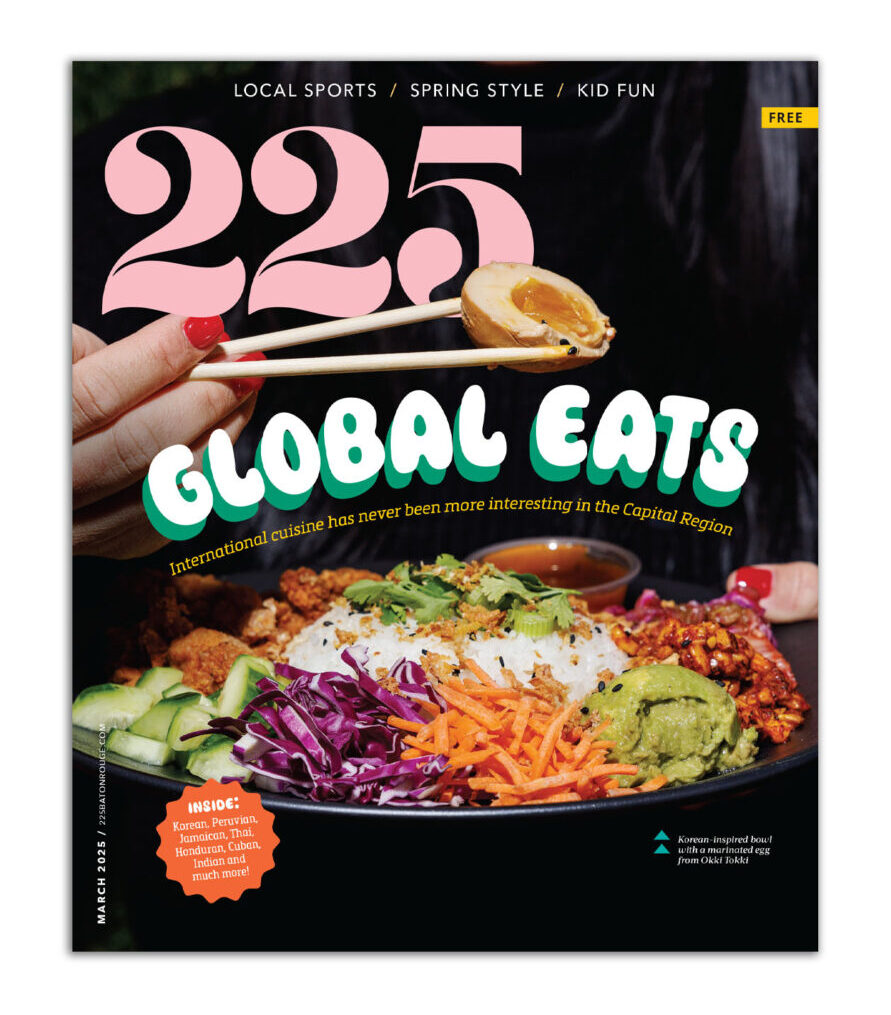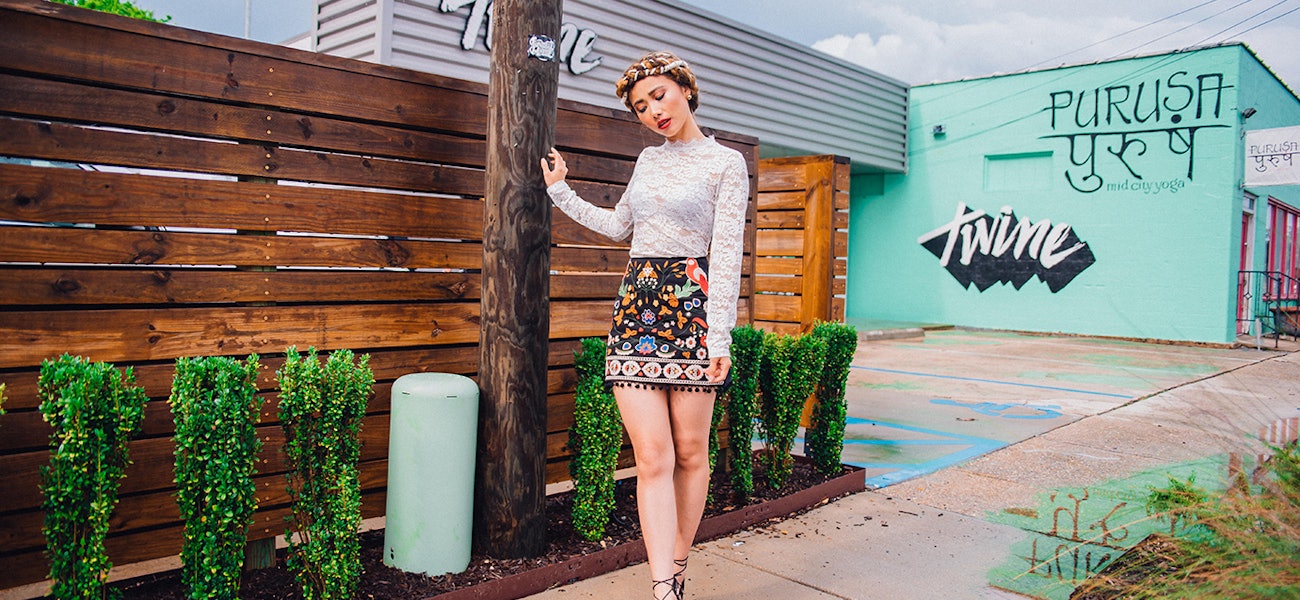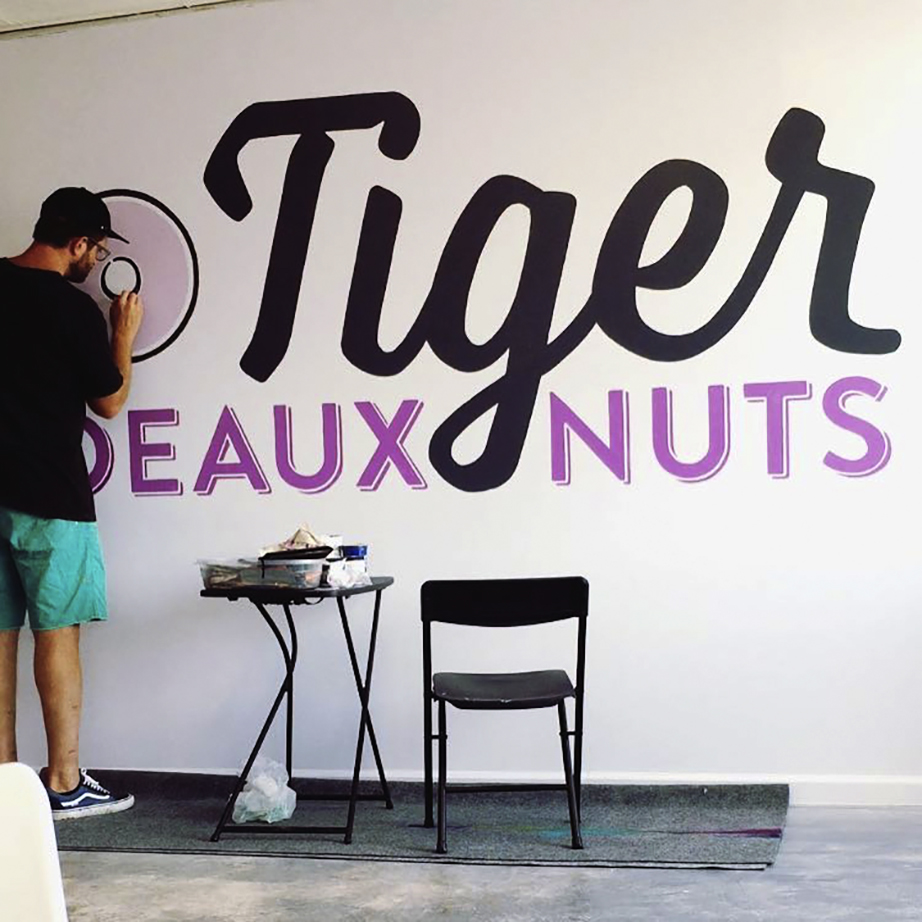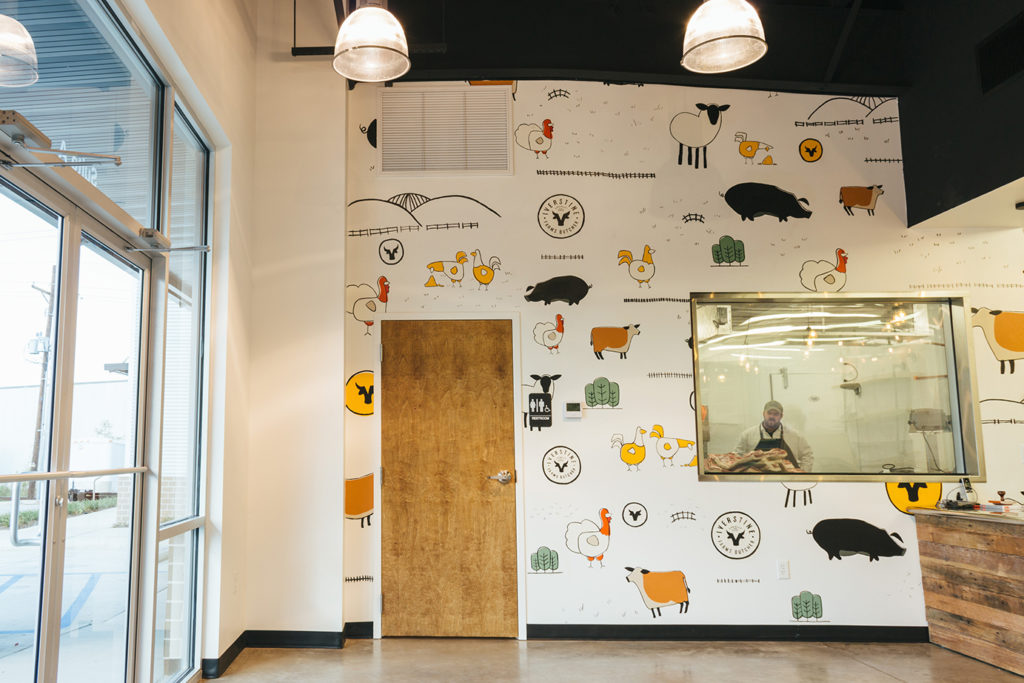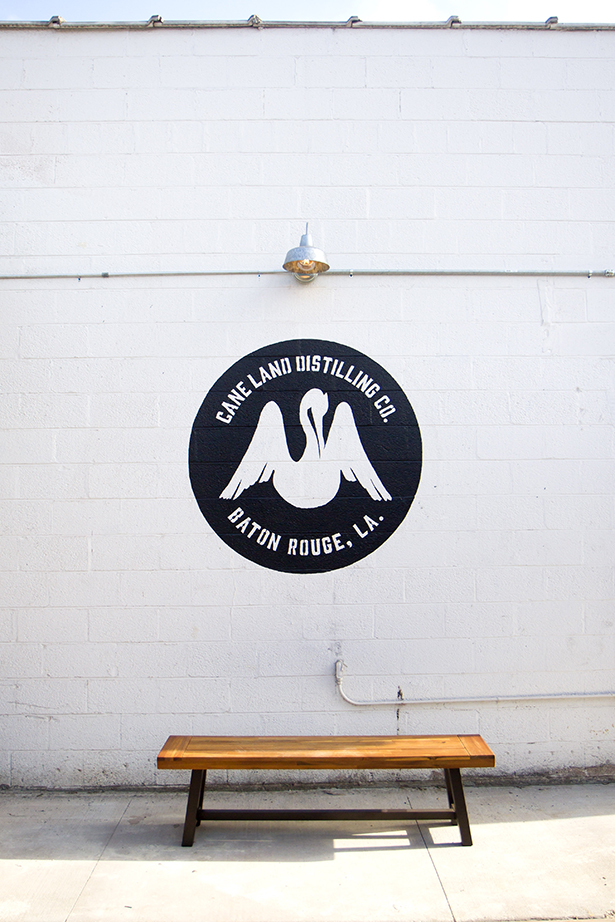It’s not enough anymore just to have good customer service or a hot plate on the table.
We’re all moving quickly these days, and more and more often, we’re choosing where to go based on what catches our eyes on Instagram or on the street as we drive by. That’s where a striking custom mural comes in handy, and Baton Rouge restaurants and other businesses are taking notice.
Baton Rouge-based artist Marc Fresh has hand-painted more than 40 murals around the city in the past few years for businesses such as City Pork and Mid City Redevelopment Alliance, varying from direct recreations of logos to original works. Fresh says a mural leaves a lasting impression.
